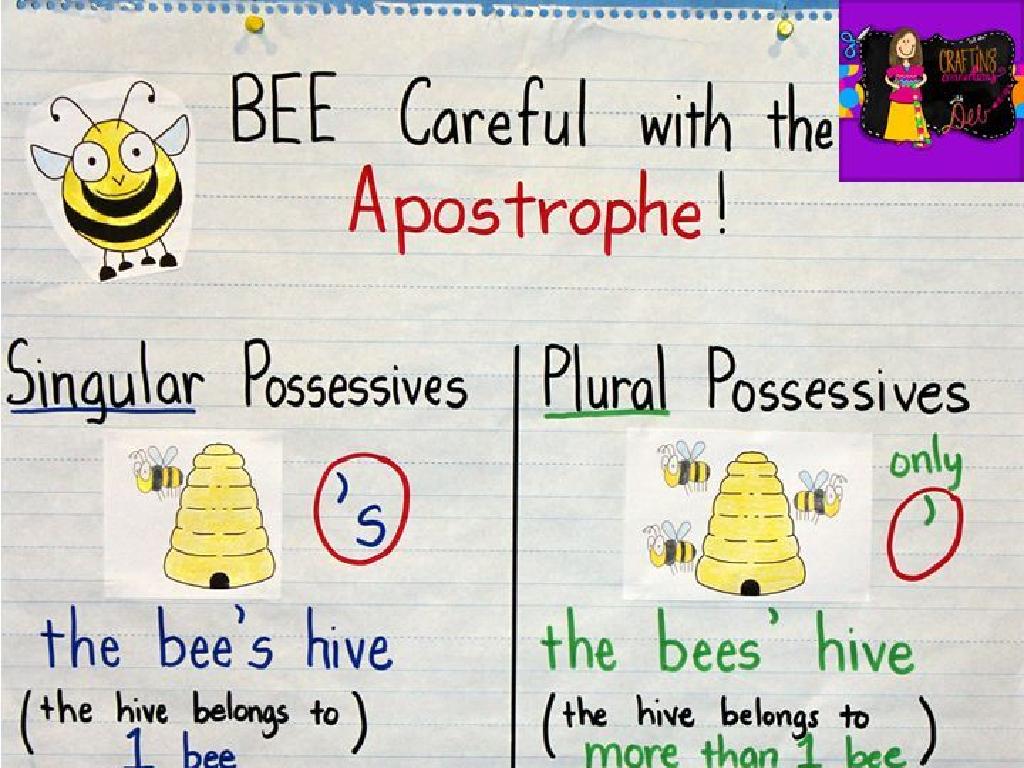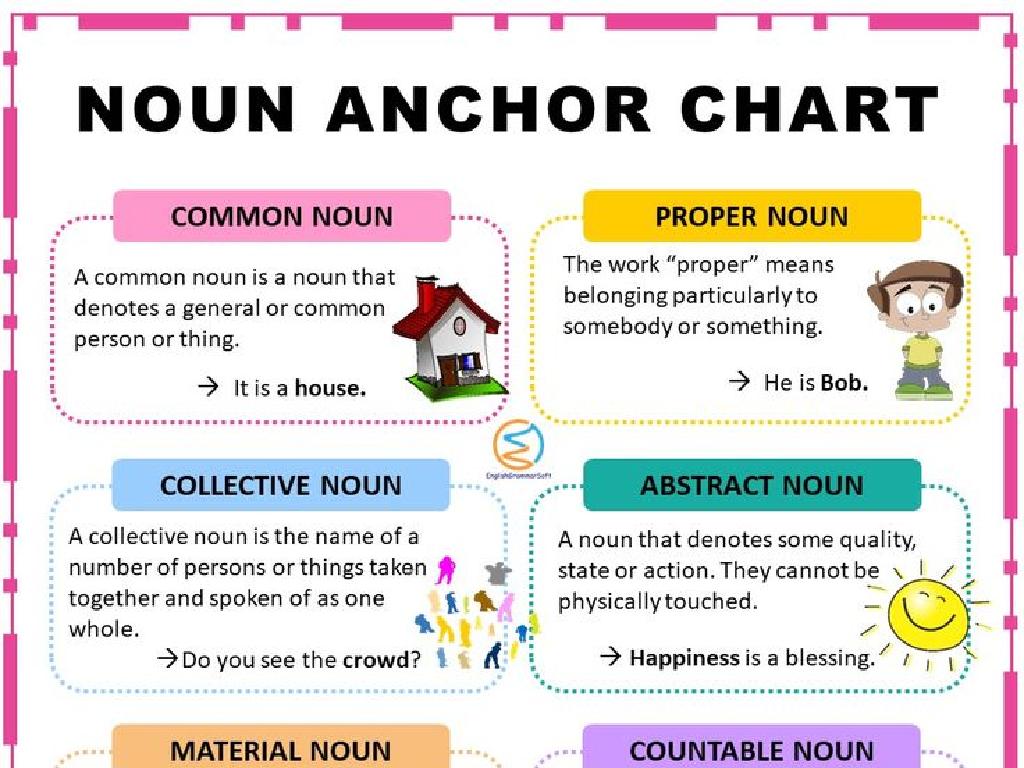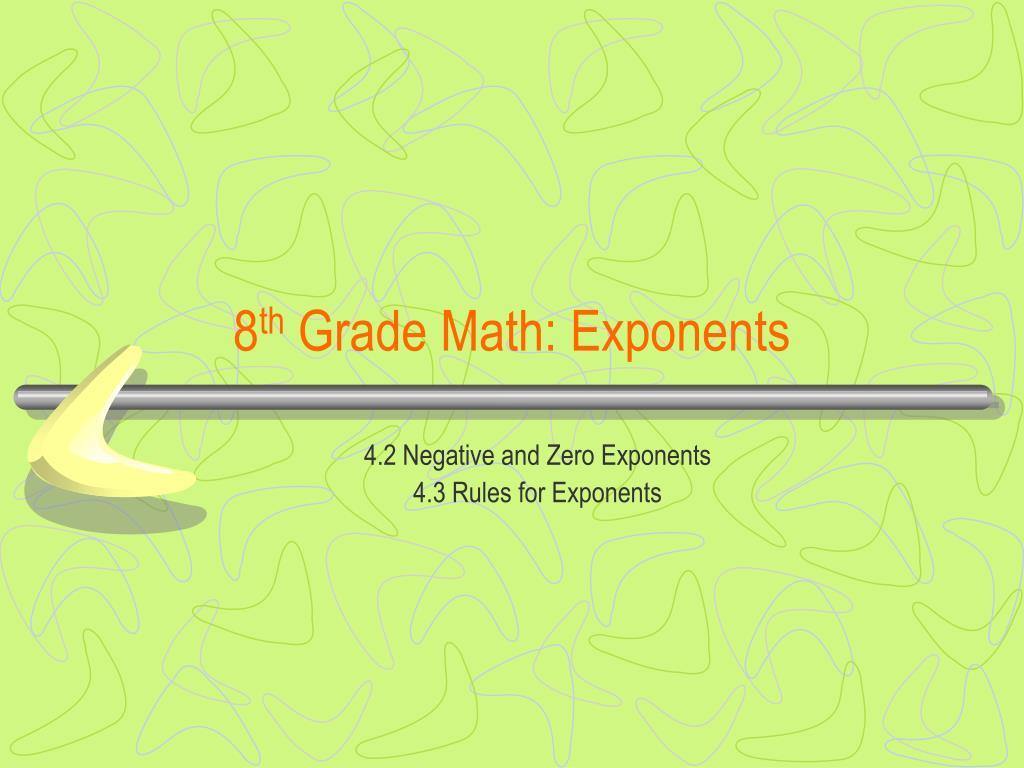Inequalities With Addition And Subtraction Of Like And Unlike Fractions
Subject: Math
Grade: Sixth grade
Topic: Add And Subtract Fractions
Please LOG IN to download the presentation. Access is available to registered users only.
View More Content
Introduction to Inequalities with Fractions
– Equality vs. Inequality
– Equality means the same as, inequality means not equal.
– Defining Inequalities
– Inequalities show that one value is smaller or larger than another.
– Inequalities with Like Fractions
– When fractions have the same denominator, compare numerators to find inequality.
– Inequalities with Unlike Fractions
– For different denominators, find a common denominator before comparing.
|
This slide introduces the concept of inequalities in the context of fractions, a fundamental part of sixth-grade math. Start by explaining the difference between equality (when two expressions are equal) and inequality (when they are not equal). Introduce the symbols for inequalities such as , d, and e. Discuss how to compare fractions with the same denominators directly by looking at the numerators. For unlike fractions, guide students through the process of finding a common denominator to compare the sizes of the fractions. Use examples to illustrate these concepts and ensure students understand how to determine when one fraction is less than, greater than, or not equal to another.
Recap: Adding & Subtracting Fractions
– Review of fraction basics
– Fractions represent parts of a whole; numerator/denominator format
– Adding like fractions
– Sum fractions with the same denominator; just add the numerators
– Subtracting unlike fractions
– For different denominators, first find a common denominator
– Methods to find common denominators
– Use least common multiple (LCM) of denominators to find common base
|
This slide is a quick review of the fundamental concepts of fractions, aimed at reinforcing students’ understanding before moving on to inequalities involving fractions. Start by revisiting what fractions represent and their components (numerator and denominator). Then, explain the process of adding fractions with the same denominator by combining numerators. For subtracting fractions with different denominators, emphasize the importance of finding a common denominator, using the LCM method. Provide examples for each case and encourage students to solve a few problems to apply these concepts. This will prepare them for understanding and solving inequalities that involve both like and unlike fractions.
Inequalities Basics: Understanding Symbols
– Learn inequality symbols: >, ‘ means more than, ‘ 3 shows 5 is greater than 3, 2 < 4 shows 2 is less than 4
– Practice with fractions
– Compare fractions like 1/2 < 3/4 or 2/3 e 1/2
|
This slide introduces the fundamental concepts of inequalities, focusing on the symbols used to represent them. It’s crucial for students to understand that these symbols are used to compare two values or expressions. Provide clear definitions for each symbol and ensure students can identify and use them correctly. Use straightforward numerical examples to demonstrate each symbol’s meaning. Then, apply these concepts to fractions, showing how to determine which of two fractions is greater or if they are equal. Encourage students to practice by creating their own examples of inequalities with fractions, both like and unlike, to reinforce their understanding.
Inequalities with Like Fractions
– Comparing like fractions
– When fractions have the same denominator, compare numerators to determine the greater fraction.
– Inequality symbols and fractions
– Use symbols: >, 1/8 and 5/6 < 6/6 together.
|
This slide introduces students to the concept of inequalities involving like fractions. Start by explaining that like fractions have the same denominator, making it easier to compare them by looking at the numerators. Introduce the inequality symbols and explain what each symbol represents. Work through example problems as a class, demonstrating how to apply the inequality symbols when comparing like fractions. Encourage students to explain their reasoning for each comparison and ensure they understand that the inequality symbol points to the smaller fraction. Provide additional practice problems for students to solve independently or in small groups.
Inequalities with Unlike Fractions
– Comparing unlike fractions
– Use cross-multiplication to compare values
– Finding common denominators
– Common denominators are essential for direct comparison
– Solving example problems
– Apply learned techniques to solve problems
– Understanding inequality signs
|
This slide introduces students to the concept of comparing and understanding inequalities involving fractions with unlike denominators. Start by explaining that unlike fractions have different denominators and cannot be directly compared. Teach the method of cross-multiplication as a way to compare these fractions without finding a common denominator. Then, move on to finding common denominators, which is a crucial skill for adding, subtracting, and comparing fractions. Work through example problems to apply these concepts, ensuring to include problems with both greater than and less than inequalities. Emphasize the importance of understanding inequality signs and their correct usage when writing the final answer. Provide additional practice problems for students to work on as homework.
Solving Inequalities with Fraction Addition
– Add fractions within inequalities
– Combine like/unlike fractions; keep inequality sign correct
– Maintain balance in inequalities
– Like balancing scales, don’t change the inequality’s truth
– Work through addition examples
– Example: If 1/4 + x > 3/4, what is x?
– Apply knowledge to new problems
– Use examples as a guide to solve similar homework problems
|
This slide introduces students to the concept of solving inequalities that involve the addition of fractions. Start by explaining how to add like and unlike fractions within an inequality, emphasizing the importance of finding a common denominator. Highlight the necessity of keeping the inequality balanced, which means whatever operation is done to one side must be done to the other. Work through example problems to illustrate the process, such as adding 1/4 to both sides of an inequality to isolate the variable. Encourage students to apply the strategies learned from the examples to new problems, reinforcing their understanding of the concept.
Solving Inequalities with Subtraction
– Subtract fractions in inequalities
– Just like equations, but watch the inequality sign!
– Keep the inequality balanced
– Treat both sides equally, like a scale
– Example: 3/4 – x > 1/2
– Find x that makes the inequality true
– Practice with similar problems
|
When teaching students to solve inequalities involving the subtraction of fractions, emphasize the similarity to solving equations. The key difference is to be mindful of the inequality sign. Use visual aids like a balance scale to illustrate the concept of maintaining balance. Work through the example problem step by step, showing how to find the value of x that satisfies the inequality. Provide additional practice problems for students to solve, ensuring they understand the process and can apply it independently. Encourage students to check their answers by substituting the value of x back into the original inequality.
Class Activity: Inequality Challenge
– Pair up and solve problems
– Share solutions with the class
– Discuss various solving methods
– Compare how pairs solved the problems differently
– Reflect on different answers
– Understand that different methods can lead to the same solution
|
This activity is designed to foster collaborative problem-solving skills among students. Pairs will work together to solve a set of inequalities involving the addition and subtraction of like and unlike fractions. After solving, each pair will present their solutions to the class, providing an opportunity for students to communicate their mathematical thinking. During the discussion, encourage students to explore different approaches to solving the inequalities, such as using number lines or common denominators. This will help them see the flexibility in mathematical methods and reinforce their understanding of inequalities. Possible activities include solving word problems, comparing fractions with different denominators, and creating their own inequality problems for others to solve.
Wrapping Up: Inequalities with Fractions
– Recap of inequalities with fractions
– Reviewed addition and subtraction of like/unlike fractions in inequalities
– Why mastering inequalities matters
– Understanding inequalities is crucial for solving real-world problems
– Homework: Inequality practice problems
– Solve assigned problems to reinforce today’s lesson
– Keep practicing for mastery!
|
As we conclude today’s lesson on inequalities involving the addition and subtraction of like and unlike fractions, it’s important to emphasize the key concepts covered. Reiterate the steps for finding common denominators and combining fractions within inequalities. Highlight the importance of mastering these skills, as they are foundational for algebra and will be applied in future math problems and real-life situations. For homework, assign a set of practice problems that require students to apply what they’ve learned. Encourage them to approach each problem methodically and to check their work. Remind them that consistent practice is essential for understanding and mastering mathematical concepts.






